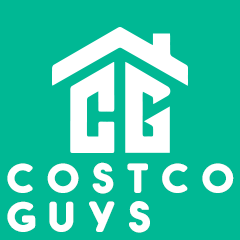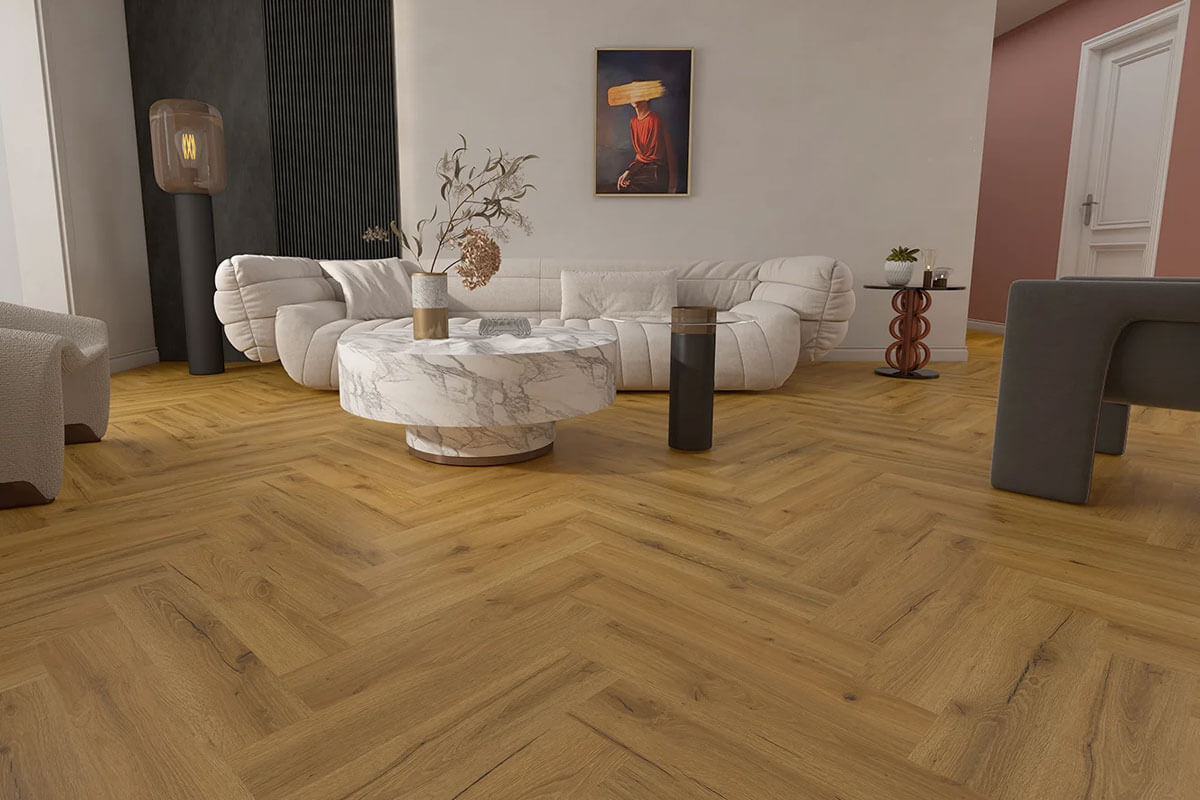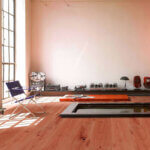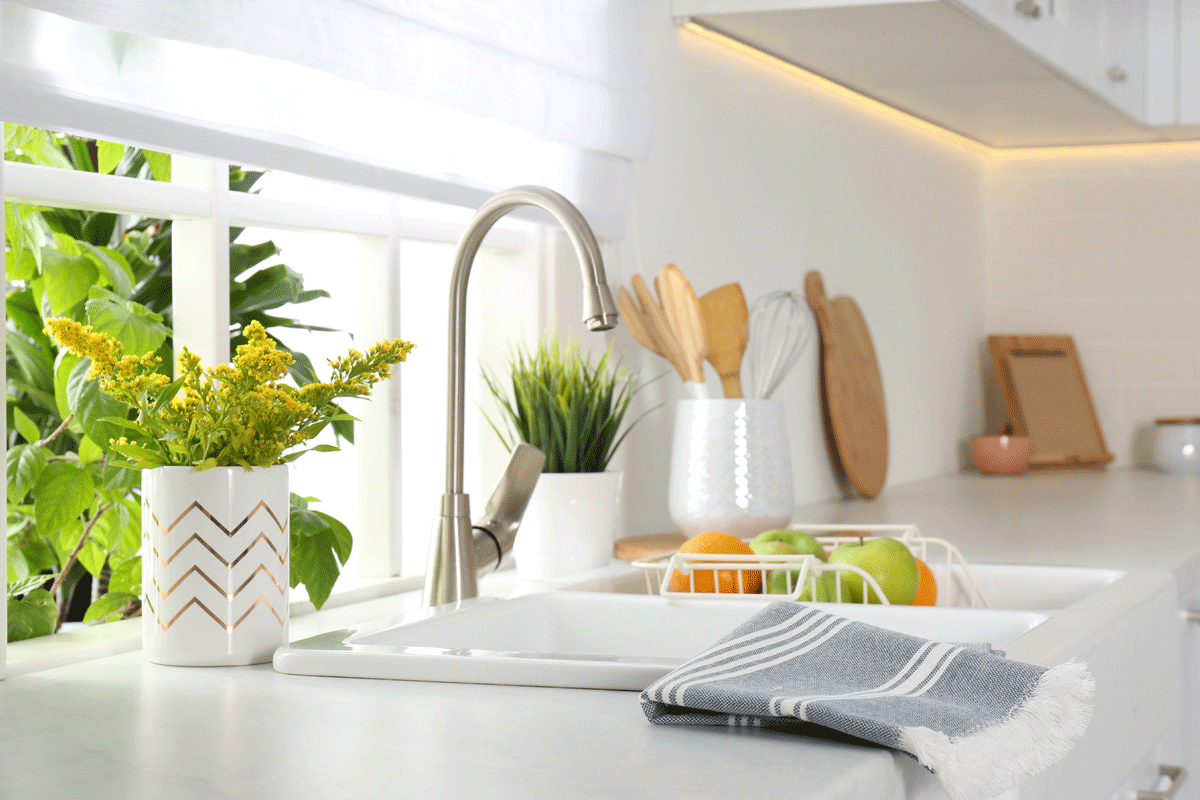Luxury vinyl tile (LVT) flooring delivers the stunning look of stone or ceramic tile without the high cost or maintenance hassles. This waterproof flooring option costs $4-16 per square foot installed and lasts 15-25 years, making it perfect for kitchens, bathrooms, and high-traffic areas where you want both style and durability.
- What makes modern LVT last longer and feel better than old vinyl or tile?
- How to choose quality LVT: cost, warranty, and installation types
- Comparing LVT with LVP, hardwood, and laminate
- Design trends & practical use: styles, trends, where to use LVT
- How to clean, maintain, and maximize your LVT’s lifespan
- Market popularity and ROI: Why LVT is a safe, stylish choice today
What makes modern LVT last longer and feel better than old vinyl or tile?
Modern LVT uses advanced multi-layer construction that makes it far superior to old vinyl. The key difference lies in the wear layer thickness and rigid core technology that wasn’t available in earlier vinyl products.
Today’s LVT features multiple protective layers working together. The bottom backing layer provides stability. The core layer (often rigid core vinyl with stone plastic composite) adds strength and prevents flexing. The photographic design layer creates realistic stone or tile patterns. Finally, the clear wear layer on top resists scratches, stains, and daily wear.
LVT typically lasts 15-25 years when properly maintained, compared to 5-10 years for basic vinyl. The wear layer thickness determines durability – look for at least 12 mil (0.3mm) for residential use, or 20+ mil for high-traffic areas. Rigid core versions feel more solid underfoot and handle temperature changes better than flexible vinyl.
Unlike cold ceramic tile, LVT feels warm and comfortable to walk on. It also reduces noise compared to hard surfaces, making it family-friendly. The improved printing technology creates textures you can actually feel, not just see, giving you authentic stone or tile appearance at a fraction of the cost.
How to choose quality LVT: cost, warranty, and installation types
LVT installation costs range from $4-16 per square foot total, with materials running $2-10 per square foot and labor adding $2-6 per square foot. The price varies based on quality, thickness, and installation method you choose.
Three main installation types exist. Glue-down LVT gets permanently adhered to the subfloor – it’s the most stable option and works best in bathrooms or areas with moisture. Click-lock systems snap together like puzzle pieces, creating a floating floor that’s perfect for DIY installation. Loose-lay vinyl sits on top of the subfloor without adhesive or locking mechanisms.
Understanding wear-layers and thickness
The wear layer protects your floor from damage. Thicker wear layers cost more but last longer. Residential areas need 12-20 mil thickness. Commercial spaces or homes with pets should consider 20+ mil. Don’t be fooled by total plank thickness – the wear layer matters most for longevity.
Check warranties carefully. Quality LVT comes with 15-25 year residential warranties. Commercial warranties typically run 5-10 years. Avoid products with warranties under 10 years for home use.
Glue-down vs click vs loose-lay vs rigid core
Click-lock installation works best for DIY projects and offers flexibility for future changes, while glue-down provides permanent installation with stability in high-traffic areas. Rigid core versions work with both installation methods and provide the most realistic feel underfoot.
Floating floors (click-lock) install faster and allow for expansion and contraction. They work over most existing floors. Glue-down takes longer but creates the most permanent, stable installation. Loose-lay works best for temporary installations or rental properties.
Comparing LVT with LVP, hardwood, and laminate
The key difference between LVT and LVP lies in their design: LVT mimics natural stone or ceramic tiles, while LVP replicates hardwood planks. Both use identical construction methods and offer similar durability and waterproof performance.
LVT works better in bathrooms, kitchens, and areas where you want a stone or tile aesthetic. The square or rectangular tile format allows for creative patterns like herringbone or checkerboard layouts. LVP suits living rooms, bedrooms, and spaces where you prefer a wood look.
Compared to real hardwood, both LVT and LVP cost about half as much upfront and require virtually no maintenance. According to the National Association of Realtors®, installing new wood floors yields 118% cost recovery, while LVT delivers similar aesthetics at lower cost. Unlike wood, LVT won’t warp, scratch easily, or need refinishing.
Laminate flooring costs slightly less than LVT but isn’t truly waterproof. LVT handles spills and moisture better, making it superior for kitchens and bathrooms. Scratch-resistant LVT also holds up better to pets and kids than laminate surfaces. The easy maintenance of LVT means you can clean spills with just soap and water, while laminate requires more careful handling around moisture.
Design trends & practical use: styles, trends, where to use LVT
2025 brings a return to warmer, earthier tones like honey oak, soft walnut, and golden beech, moving away from the cool grays that dominated recent years. These warm neutrals create cozy, inviting spaces perfect for modern homes.
Wide plank flooring and extra-long planks are increasing in popularity, making rooms look larger while creating an elegant, streamlined look. Wide planks work beautifully in open-plan areas and smaller rooms where they add visual depth.
Herringbone and chevron patterns top the trending list. LVT herringbone provides the elegance of classic parquet with water-resistant performance. These patterns work especially well in entryways, kitchens, and accent areas. Matte finishes are also gaining popularity because they hide scratches better and provide a more natural, sophisticated look.
Sustainability matters more than ever. Manufacturers now offer LVT with more recycled content and low-VOC adhesives, responding to eco-conscious homeowners. Look for products with environmental certifications if green building matters to you. LVT excels in moisture-prone areas like bathrooms, laundry rooms, mudrooms, and basements. It also works perfectly with underfloor heating systems since it conducts heat well. High-traffic areas like hallways, kitchens, and entryways benefit from LVT’s durability and easy cleaning.
How to clean, maintain, and maximize your LVT’s lifespan
Regular sweeping or vacuuming removes dirt and debris that could scratch the surface, and damp mopping with mild detergent keeps floors looking fresh. LVT maintenance stays simple compared to natural materials like hardwood or stone.
Use a pH-neutral cleaner or manufacturer-approved cleaning solution for best results. Avoid harsh chemicals like bleach, ammonia, abrasive cleaners, or wax-based products that can damage the protective wear layer. Clean spills immediately to prevent staining, though quality LVT resists most stains naturally.
Place furniture pads under chairs and tables, use walk-off mats in entryways to reduce tracked-in dirt, and trim pet nails regularly to minimize scratches. These simple steps prevent most damage before it happens. In sunny rooms, use window treatments to prevent UV fading over time.
Maintenance tips for maximum lifespan include rotating rugs periodically to ensure even wear patterns. Never use steam mops or high-speed burnishers that can penetrate and damage the wear layer. For deep scratches, individual tiles can be replaced without affecting the entire floor. With proper care, LVT floors last 15-25 years depending on quality, wear layer thickness, and foot traffic levels. The investment pays off through decades of beautiful, functional flooring that requires minimal upkeep.
Market popularity and ROI: Why LVT is a safe, stylish choice today
Luxury vinyl plank flooring can increase a home’s perceived value by up to $5,500, according to recent real estate studies, and often helps homes sell faster with higher sale prices. This popularity means you’re choosing a proven solution that adds value to your home.
Resale value benefits come from LVT’s broad appeal to potential buyers. Most homebuyers appreciate waterproof flooring in kitchens and bathrooms, and the modern, updated look appeals to contemporary tastes while the durability reassures buyers about long-term performance. The combination of style, performance, and reasonable cost makes LVT a smart investment.
LVP and LVT prices generally range from $2 to $7 per square foot, with good ROI, especially in homes targeting families or rental markets. Installation flexibility adds to the value proposition. Click-lock and peel-and-stick vinyl options make DIY installation easier than ever for homeowners. This can save hundreds or thousands in labor costs while giving you control over the timeline.
The technology keeps improving. Advanced printing creates more realistic textures and patterns each year. Rigid core technology provides better feel underfoot. Enhanced wear layers increase lifespan. These improvements ensure your LVT investment stays current with flooring technology trends.
Bottom line: LVT offers the perfect balance of style, durability, and value for today’s homes. Whether you’re renovating one room or an entire house, this resilient flooring delivers beautiful results that last for decades while fitting most budgets and lifestyles. The growing market acceptance and proven track record make it a safe choice that won’t leave you with buyer’s remorse.





